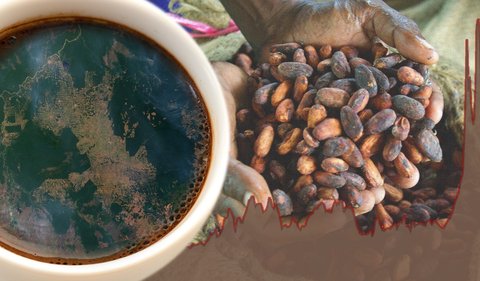Betting on the Next Harvest: Why Agtech’s Moment May Finally Have Arrived
May 27, 2025 - 5 min read
For the first time, agricultural innovation may align with both the economics of venture capital and the urgency of supply disruption
For years, agricultural technology has promised more than it has delivered, at least by the standards of Silicon Valley. Venture capitalists, ever in pursuit of 10x or even 100x returns, have often found themselves disillusioned. Even a several-hundred-million-dollar acquisition, the kind that would barely make headlines in software or biotech, is considered a landmark outcome in agtech. That’s not a sign of failure, but of sectoral constraints: high capital requirements, slow go-to-market timelines, and an often skeptical customer base.
If one assumes exits of that magnitude, a venture portfolio would require an unusually high success rate and unusually low dilution—two things not often found together. Given these dynamics, skepticism toward agtech has been the default stance among many investors and their limited partners.
Yet the ground is shifting.
A Structural Realignment in Agriculture
Today’s contrarians argue that we are entering a new era of agricultural economics and technological readiness. The combined pressures of climate change, population growth, and shifting consumer preferences are colliding with rapid advances in robotics, artificial intelligence, and biomanufacturing. This isn’t just an incremental change; it could be a structural realignment. If that’s true, historical outcomes may no longer be predictive.
Nothing ventured, nothing gained—but nothing gained unless something has truly changed.
Agriculture is not a monolith but a patchwork of supply chains, ecosystems, and business models that together form a global food and land-use system worth over $10 trillion. Still, a unifying factor has emerged: nearly every major food production system is now under stress from climate volatility. Across the sector, producers are beginning to feel the financial impact, as evidence continues to emerge of climate-related pressures disrupting operations and undermining farm viability.
Cocoa, Coffee, and the First Signals of Crisis
The early shockwaves are already visible in agroforestry crops like coffee and cocoa. Grown in narrow latitudinal bands with little geographic flexibility, these commodities are particularly exposed to drought, heat, and shifting disease patterns. The consequences are playing out in real time: coffee prices have more than doubled since 2020, and cocoa has shattered price records, sending ripples through supply chains and consumer markets alike. And while large corporates may be able to weather some supply disruption, analysts expect that prices for these commodities will remain elevated in the short to medium term.
Cocoa prices peaked at nearly $11,000 per metric ton in January, up from $2,400 just four years earlier.
At the same time, global demand for these goods continues to climb, particularly in emerging economies. As incomes rise, consumption of foods like chocolate, coffee, fresh produce, dairy, and meat tends to increase, driven not only by affordability, but also by shifting cultural and dietary aspirations.
Innovation as Shock Absorber
Producers are already reaching for tools to manage volatility. In Brazil, coffee farmers are investing in irrigation systems to fight prolonged drought. Meanwhile, startups are bypassing farms altogether, using microbial fermentation and cell culture to recreate familiar products without relying on fragile ecosystems.
These technologies aim to produce chemically identical or sensorily similar alternatives to conventional foods. Historically, many such efforts have struggled to gain traction with consumers. The long shadow of carob still looms over attempts to replicate beloved flavors without the original ingredients. But the coming supply chain dislocations may provide the necessary pricing opportunity and consumer urgency for these companies to succeed.
When U.S. egg prices hit $5.90 per dozen in February 2025, up from just $1.22 in 2020, plant-based alternatives like Just Egg saw a surge in sales. Whether those gains persist as prices stabilize remains to be seen. But the signal is clear: when the pain is high enough and the alternative good enough, consumers will switch. If coffee alternatives had reached true price and taste parity in 2024, they might have captured the $1.9 billion gap left by the commodity shortfall. That’s real money and real opportunity.
But coffee and chocolate are luxuries. The real test will come when staples like rice, wheat, and maize face sustained disruptions. In such a scenario, the appetite for risk and for change will rise dramatically, perhaps outpacing even the investment community’s willingness to act.
Climate Alignment and the Profit Motive
There’s a fortunate alignment at work. Many of the technologies poised to stabilize food production also reduce the sector’s environmental footprint. Chocolate, for example, carries a heavy greenhouse gas load, thanks to deforestation, fertilizer use, and global shipping. Microbial fermentation- or cell-culture-based alternatives often require fewer inputs and generate significantly lower emissions.
And these technologies are evolving rapidly. Fermentation- and cell-culture cost curves are falling faster than expected. Robotics are becoming cheaper, sturdier, and easier to deploy. Inexpensive sensors can now generate vast data streams to feed machine learning systems that optimize everything from irrigation to harvest timing.
Solving for market fragility also helps address climate change, and vice versa.
If capital can flow into technologies that stabilize the agricultural system while decarbonizing it, the return on investment may not only be financial; it may be existential.
I’m betting that the technologies emerging now—from microbial fermentation platforms to AI-driven farms—will not just scale and generate returns worthy of venture expectations. More importantly, they may help preserve the most basic thing of all: a stable food system.
Composite image includes works by Irene Scott/AusAID (CC BY 2.0), Petar Milošević (CC BY-SA 4.0), and NASA Earth Observatory (Public Domain). © Protein Report 2025.

















